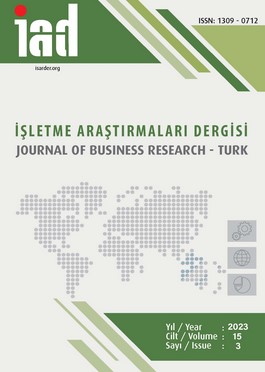Firmalar ve Kamu Maliyesi Perspektifinden Çevre Harcamalarının Yakın Geleceği: GMDH Tipi Yapay Sinir Ağları Analizi
The Near Future of Environmental Expenditures from the Perspective of Firms and Public Finances: GMDH Type Artificial Neural Networks Analysis
Author(s): Bilgen TAŞDOĞANSubject(s): Energy and Environmental Studies, Economic policy, Environmental and Energy policy, Public Finances
Published by: İşletme Araştırmaları Dergisi
Keywords: Environmental Pollution; Environmental Expenditures; Public Finance and Firms;
Summary/Abstract: Purpose – The aim of the study is to guide the decision makers by revealing the shares of the public and companies in environmental expenditures and the possible trends they may encounter in the future. Design/methodology/approach – Time series analyzes were made on the basis of Group Data Processing Method Type Artificial Neural Networks of environmental pollution for the period 2021-2028, the shares of the public sector and companies in environmental protection expenditures, and the development of environmental taxes in the 2021-2027 period. Findings – It has been determined that Greenhouse Gas Emission values in Türkiye will increase by approximately 14.2 percent, environmental protection expenditures will increase by approximately 106.9 percent and total environmental tax revenues will decrease by approximately 15.3 percent in the relevant period. It is also calculated that the current expenditures of the public sector within the total environmental protection expenditures will decrease to 2 percent and the public investment expenditures will decrease to 11 percent. On the other hand, it has been calculated that the share of companies' current expenditures in total environmental expenditures will decrease from 59.06 percent in 2020 to 50 percent in 2027 and the share of investment expenditures will increase to 89 percent. Discussion – The study presents a suggestion that the economic burden of the measures taken against increasing pollution until 2028 will be met by the increase in the share of companies in total environmental expenditures, and that companies should allocate high budgets for environmental expenditures in the near future. In addition to this study, using larger data sets and different variables, the positive and negative effects that will arise if companies make high environmental expenditures can be discussed.
Journal: İşletme Araştırmaları Dergisi
- Issue Year: 15/2023
- Issue No: 3
- Page Range: 2302-2320
- Page Count: 19
- Language: Turkish

